ARTICLE AD BOX

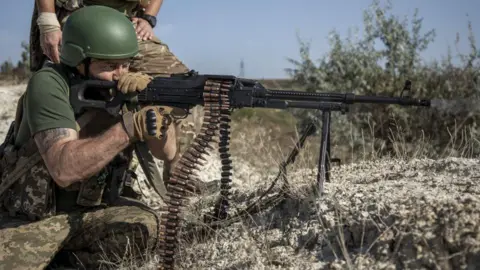 Getty Images
Getty Images
Ukraine is facing Russian attacks along the front
On the frontlines, Ukrainian soldiers use a graphic term to describe the Russian tactics they face daily.
They call them "meat assaults": waves of Russian soldiers coming at their defensive positions, sometimes nearly a dozen times in a day.
Lt Col Anton Bayev of the Khartia Brigade of Ukraine’s National Guard says wave after wave can arrive in just a few hours at frontlines positions north of Kharkiv.
“The Russians use these units in most cases purely to see where our firing equipment is located, and to constantly exhaust our units,” he said.
“Our guys stand in positions and fight, and when four or five waves of the enemy come at you in a day, which you have to destroy without end, it is very difficult - not only physically, but also psychologically.”
This tactic has led to staggering Russian casualties since Moscow launched its latest offensive two months ago. Around 1,200 Russian soldiers were being killed or wounded every day in May and June, the highest rate since the beginning of the war, according to Western officials.
Those attacking are normally quickly spotted by drones above and the Russians leave their dead and wounded on the battlefield, Lt Col Bayev says. “Their main task is simply meat assaults and our total exhaustion.”
The tactic is a sign that Russia is seeking to make the most of its key advantage - numbers.

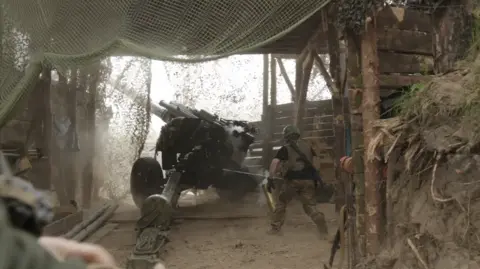 Khartia 13th Brigade of Ukraine's National Guard
Khartia 13th Brigade of Ukraine's National Guard
The Khartia Brigade of Ukraine's National Guard faces wave after wave of "meat assaults" at the front near Kharkiv
In Pokrovsk in the Donetsk region, Captain Ivan Sekach from Ukraine’s 110th Brigade compares what he sees to a conveyor belt bringing Russians to be killed, although still allowing them to push forward slowly.
Russia benefits from a significantly larger population than Ukraine. Some of those in the assaults are former prisoners, but Russia is also able to recruit through making one-off payments, sometimes thousands of dollars.
And there have been complaints from the Russian side about “crippled regiments”, in which wounded soldiers are forced back into fighting. One video shows dozens of men, some on crutches, appealing to their commanders because they say they are wounded and require hospital treatment, but instead are being sent back into combat.
All of this, Western officials say, means Moscow can keep throwing soldiers, even if poorly trained, straight on to the front lines at the same rate they are being killed or wounded.
Ukraine could not match the Russian tactics even if it had the numbers, partly due to a different attitude towards casualties. A senior general was removed in recent weeks after complaints he was using what are often called Soviet tactics - throwing people at the front lines.
“There are a lot of criticisms because we have lost a lot of our guys because of Soviet-type mindset and strategy,” says Ivan Stupak, a former Security Service officer. “We are limited with manpower. We have no other options than thinking of our people.”

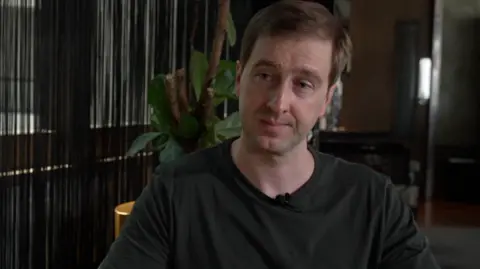
Ivan Stupak says Ukraine cares about casualties more than the Russian invaders
In the area around Kharkiv, Russian advances have been stopped. But in the east, Russia’s attritional approach is making slow but steady advances.
“Unfortunately there are a lot of Russians. And they are trying to conduct this rolling operation centimetre by centimetre, inch by inch, 100m per day, 200m per day. And unfortunately, it's successful for them,” says Stupak.
There is frustration in Kyiv about the pace of Western support. One senior official complains they are receiving enough help to ensure they do not lose but not enough to make sure they win.
Western officials acknowledge 2024 has been a tough year for Ukraine, with delays in the arrival of US military aid creating a major strain on defences which has cost territory and lives.
“It seems like a so-called incremental approach,” Oleksandr Merezhko, chair of Ukraine’s parliamentary foreign affairs committee, told the BBC.
“We receive little by little, and I get the impression that our Western allies give a little bit of weaponry, and they see what happens next, as if they're afraid of what they refer to as escalation.”
The lifting of restrictions on using US weapons over the border into Russia has made a difference and helped stall Moscow’s assault on Kharkiv.
“If we have to fight with our hands tied behind our back, you know we'll be only bleeding to death,” says Mr Merezhko. “That's why it's crucially important to be allowed to use long range missiles in the territory of Russia, and we already have results.”

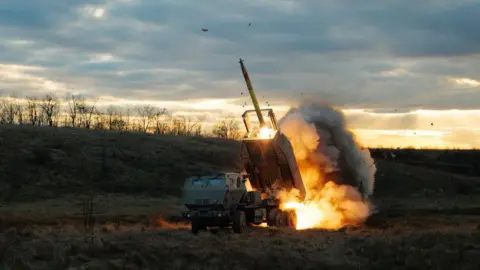 Getty Images
Getty Images
The US is now allowing Ukraine to fire US weaponry into Russia
But a Ukrainian official said the use of longer range strikes into Russia had only been a palliative and was not fundamentally altering the dynamic of the war.
“We are driving towards stalemate,” former security service officer Ivan Stupak says, acknowledging that this may lead eventually to the “bitter pill” of some form of negotiation.
During a visit to Kyiv this week, Hungarian Prime Minister Viktor Orban suggested a ceasefire first to hasten negotiations, a position that officials in Kyiv are wary of.
“We [are] not ready to go to the compromise for the very important things and values,” Andriy Yermak, chief of staff to Ukraine’s President Zelensky, told reporters in Washington.
Ukrainians fear without hard security guarantees - such as Nato membership, rather than vague talk of a bridge to such status - Russia may simply regroup and attack again in the future.
Vladimir Putin is counting on wearing down Ukraine on the battlefield and outlasting the West’s resolve to provide support. As well as launching guided aerial bombs against frontline positions and civilians in Kharkiv, Moscow has also targeted energy infrastructure across the country, leading to increasingly frequent power blackouts and concerns over what winter might bring.
November’s US election adds another layer of uncertainty, along with a question mark as to whether the European Union could realistically pick up any slack.
For Lt Col Anton Bayev on the frontline near Kharkiv, the ability to strike into Russia may have been vital, but he now sees his enemy adapting its tactics - and not just with “meat assaults”.
His losses now come from mortars and glide bombs, while his Ukrainian forces remain short of ammunition.
“We need everything, and there is always a lack,” he says.
“The boys are holding on. We're all hanging on. It's hard, but everyone knows the price and why it's all being done.”

 6 months ago
29
6 months ago
29
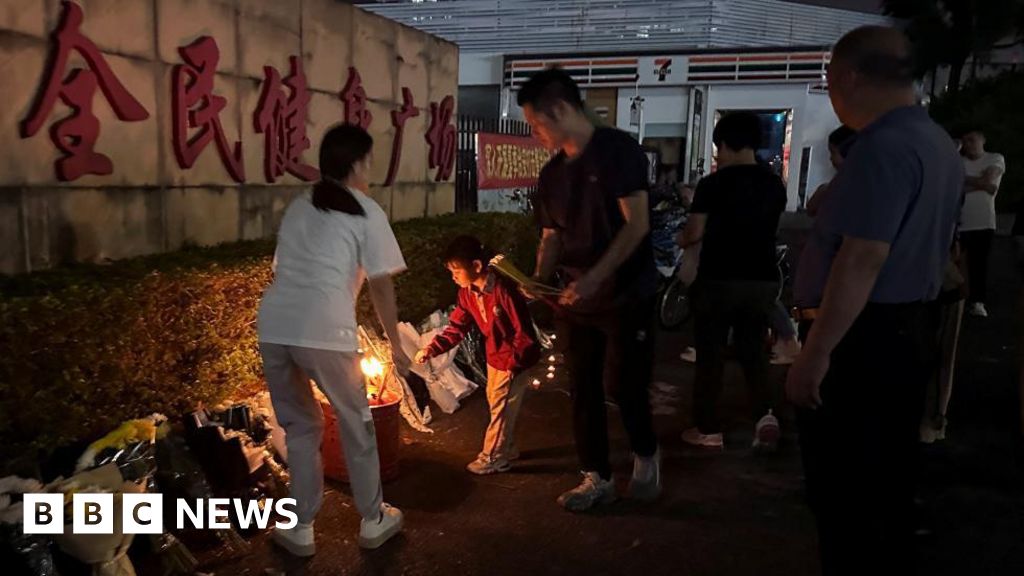
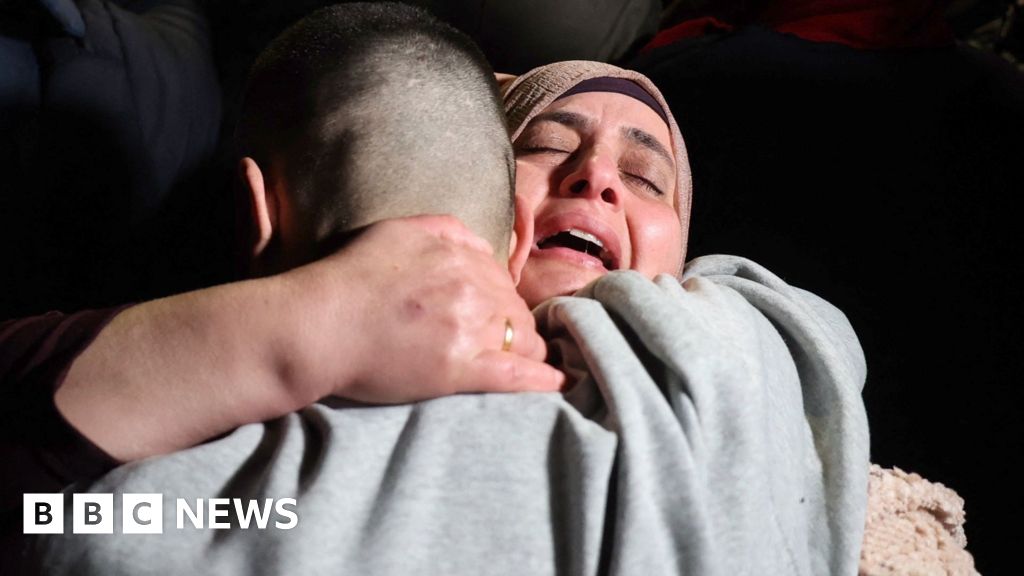
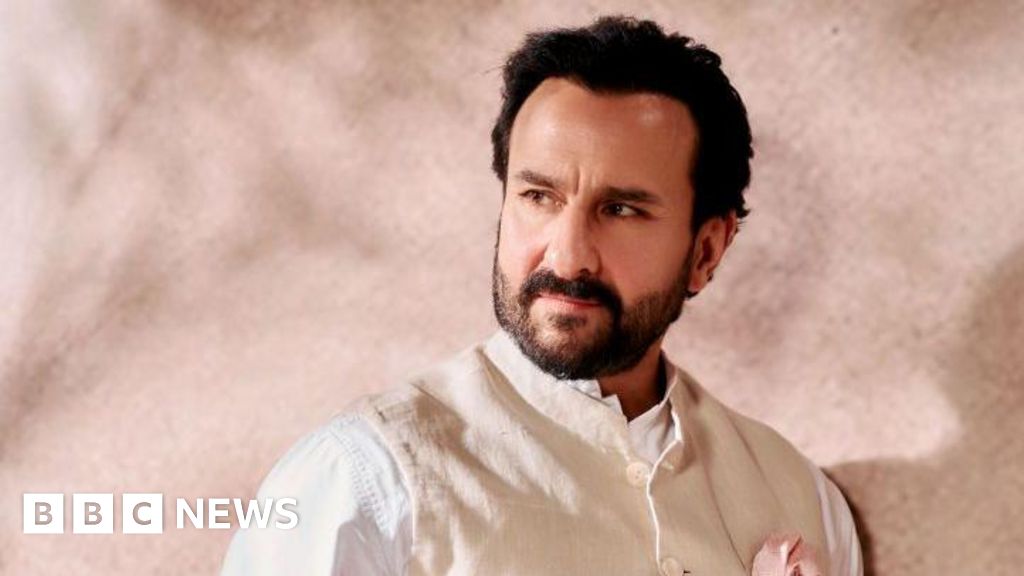





 English (US) ·
English (US) ·